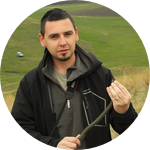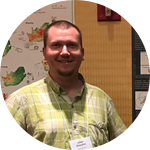About This Project
I will study how the woody encroachment (shrubs and trees takeover into grasslands) of American prairies changes the amphibian and reptile diversity within prairie communities. I will learn how these communities and species abundances are affected by woody encroachment across all three types of prairies (shortgrass, mixed and tallgrass prairie). The results of this study will be used to propose management actions to preserve key habitat for amphibian and reptile species in American prairies
Ask the Scientists
Join The DiscussionWhat is the context of this research?
Prairies are unique ecosystems, found only in North America, that provide habitat for many threatened species, and play an important role in soil stabilization, and nutrient cycling. Unfortunately, like many grasslands, prairies are among the most threatened ecosystem in United States, and less than 1% of the original land covered by prairie still exists today. In the recent years woody encroachment (shrubs and trees takeover into grasslands) has been observed in all types of prairie. I plan to investigate how this change in habitat structure affects amphibian and reptile diversity within these changing prairie habitats.
What is the significance of this project?
Many of the amphibian and reptile species that inhabit prairies are habitat specialists. Since much of the native prairie has already disappeared, there is increasing uneasiness that recent wood encroachment into prairies will reduce the quality of these habitats and hence, pose threats to amphibian and reptile species. Based on personal observations and previously published work, woody encroachment is more common in tallgrass and mixed grass prairie than in shortgrass prairie. However, to this date there is no data to show the consequences of this change in habitat structure on amphibian and reptile diversity and composition in different prairie types.
What are the goals of the project?
My goal is to investigate if the woody encroachment changes the population diversity of amphibians and reptiles in three types of prairies (shortgrass, mixed, and tallgrass prairie). Woody encroachment has already altered the community composition of multiple animal groups, including birds and herbivores. To date there is little empirical evidence to document how amphibian and reptile communities are affected by these changes. We would like to know how amphibian and reptile populations are affected in native vs. woody encroached prairies. In this study, I will characterize the amphibian and reptile communities from each type of prairie quantifying how species abundance and diversity are affected by woody encroachment
Budget
The funds will be used to purchase the materials need during fieldwork and sampling:
- Supplies – $395 (one basic handset GPS unit (Garmin eTrex 10), one pair of field gloves, one snake hook and one head lamp)
- Travel costs - $700 (covering gas expenses for approximately 5000 miles driven between sampling sites)
Endorsed by
Meet the Team
Iulian Gherghel
I am a PhD Student in the Department of Biology at Case Western Reserve University. I am a trained ecologist and herpetologist, with research interests in amphibian and reptile diversity, community ecology, and I have a strong statistical background. In the past 10 years I worked in Eastern Europe, Northern Africa, and North America studying the field factors that influence amphibian and reptile distributions at multiple scales using field observations, and geographical information systems (GIS). So far, I have authored or coauthored over 50 publications on amphibian and reptile distributions, ecology, and conservation in international and national herpetology, ecology and zoology journals. I also routinely attend scientific conferences (nearly 30 presentations to date), where I present my findings and establish connections with my peers in the field. For more information, please visit my website.
Project Backers
- 4Backers
- 3%Funded
- $24Total Donations
- $6.00Average Donation

